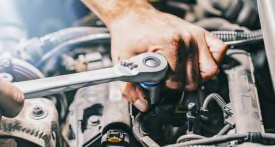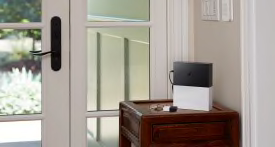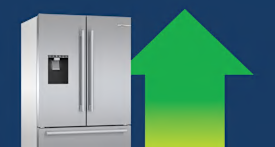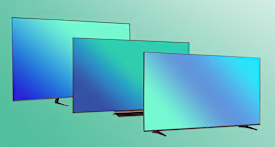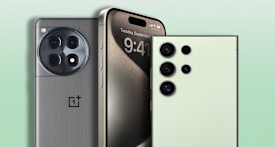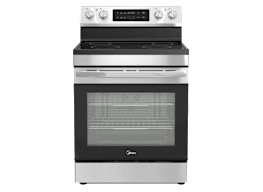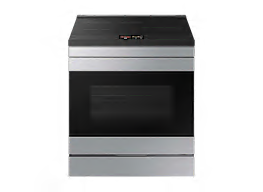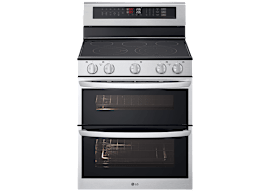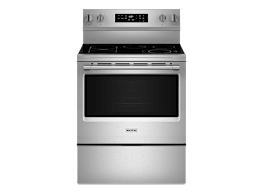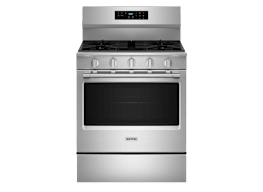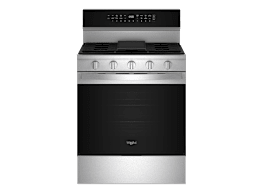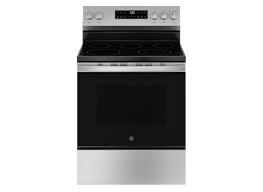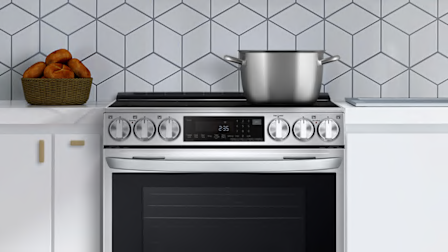9 Best Ranges of 2025, Lab-Tested and Reviewed
We found the best ranges by boiling water, melting chocolate, and baking thousands of cookies and cakes
When you shop through retailer links on our site, we may earn affiliate commissions. 100% of the fees we collect are used to support our nonprofit mission. Learn more.
A great range won’t make you a better cook, but it can certainly make meal prep easier. It’ll boil pasta water quickly, simmer tomato sauce steadily, and help cakes and cookies emerge looking and tasting their best. Ranges, more commonly called stoves, vary from budget-friendly electrics to decked-out pro-style models—which often don’t perform better.
And the most expensive ones often aren’t the best, according to our tests. “We often find that price is no indicator of performance,” says Kenneth Sutton, who leads CR’s range testing. “We have some in the mix for $1,000 that perform better than models costing $5,000.”
- Best Ranges: Gas Electric Induction
- How CR Tests Ranges
- How CR Picks the Best Ranges
Best Gas Ranges
Gas ranges provide an instant temperature response when you adjust the burner, plus a level of visual feedback that electric and even induction simply can’t match. If you’re curious about gas ranges from pro-style brands like Thermador, Viking, and Wolf, we’ve also written about the best and worst pro-style ranges from our tests.
Best Electric Ranges
Electric smoothtop ranges tend to offer faster boiling and better broiling than gas ranges. The stoves here shine in those areas, and they excel at baking. All three have a warming element on the cooktop. For more picks, check out our roundup of the best electric ranges.
Best Induction Ranges
Induction ranges are appreciated for their fast heating and steady simmering, not to mention their fast response times when a burner is adjusted. These models deliver on all three fronts.
How CR Tests Ranges
To test how well a range performs, our experts size up how evenly an oven distributes heat and how quickly a cooktop heats water using a combination of calibrated time and temperature measurements.
We also test how well the cooktop simmers tomato sauce and chocolate. And over the course of a year, our test engineers bake more than 2,400 cookies and 400 cakes to test ovens for even baking. You can learn more about our tests in our range buying guide.
Should You Repair or Replace Your Broken Range?
CR’s interactive tool leverages product costs, depreciation rates, and survey data to help you make the right choice.
How CR Picks the Best Ranges
At any retailer, you’ll find dozens of ranges—if not more—to choose from, some with fancier features than others. But what’s most important is a range’s ability to perform its essential tasks really well, day in and day out. That’s why we recommend ranges only if they meet the following criteria.
They heat water fast. The best ranges in our tests are quick to bring a large pot of water to a near-boil.
They simmer steadily. They have a low-heat burner that’s capable of maintaining a steady temperature when simmering liquids so that you don’t need to stir constantly to avoid scorching, say, tomato sauce or chocolate.
They bake and broil evenly. Cakes and cookies emerge uniformly baked from multiple racks. And the broilers heat evenly while still getting hot enough to sear.
They offer plenty of space. Many manufacturers inflate oven sizes by including the space where you can’t cook, like the bottom of the oven. We measure and score usable capacity from the lowest rack position.
They self-clean well. For those with a self-clean feature, we bake a mixture of eggs, tapioca, pie filling, and a few other tough-to-remove foods onto the walls of the oven, then use the self-clean cycle and give each model a good wipe-down to see how effective the self-clean feature is at loosening grime. (Here’s how to clean an oven without a self-clean setting.)
They’re reliable. We survey thousands of CR members each year about the reliability of their gas, electric, and pro-style ranges, and we tabulate scores based on those responses.


